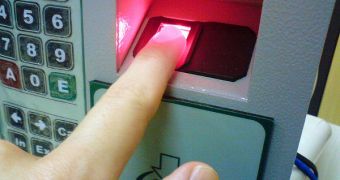Scientists have known for a long time that fingerprints, the tiny ridges that form at the tip of our fingers, serve the purpose of increasing friction between the fingers and the objects we are holding, therefore improving grip. Now, experts propose a new use for the structures, saying that their ridges may be acting as tiny levers that amplify the touch sensation for the nerve endings underneath the skin. It could be that this allows us a far great sensitivity to touch in our fingertips than in other parts of the hand, the group adds, quoted by Technology Review.
According to University of Paris expert Georges Debregeas, the role that the tiny structures play in integrating and boosting the touch sensations is a lot more complex and subtle than previously thought. The group explains that the ridges appear to be constructed in such a manner that they are able to filter mechanical vibrations in a way that allows them to be best detected by the nerve endings underneath the first layers of skin. The receptors in charge of collecting information from fingerprints are called Pacinian corpuscles, the French team says.
The corpuscles are sensitive to a narrow range of vibrations on the surface of the skin, and previous studies have identified the fact that vibrations at 250Hz are the most easily detected. The investigators made a breakthrough find in their study, when they discovered that fingerprints tended to resonate at 250Hz as well. This amazing discovery was made possible through a synthetic finger, which also featured fingerprints to scale. The instrument was equipped with a microelectromechanical sensor that was able to measure forces with a spatial resolution of millimeters.
The group reveals that the corpuscles must be acting like small signal processors, filtering the vibrations they receive from the fingerprints at a frequency of 250Hz. The latter have evolved to work together with the nerve endings, so that the organism, in this case the human, becomes efficient at picking up signals from the exterior. Without the small ridges, we would undoubtedly still retain a touch sensation in the fingers. But, most likely, that sensation would not be as accurate as it is today, experts believe.

 14 DAY TRIAL //
14 DAY TRIAL //